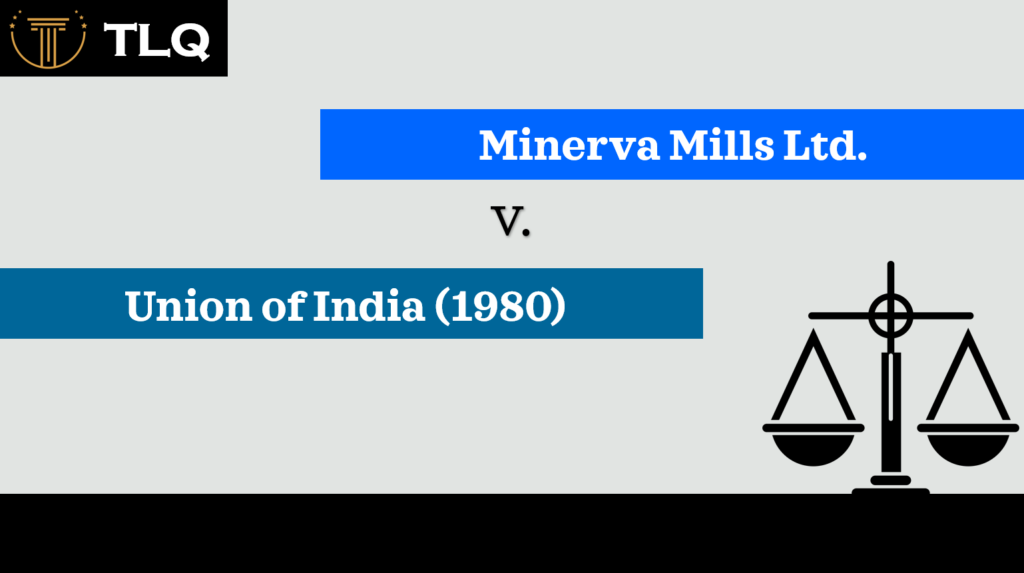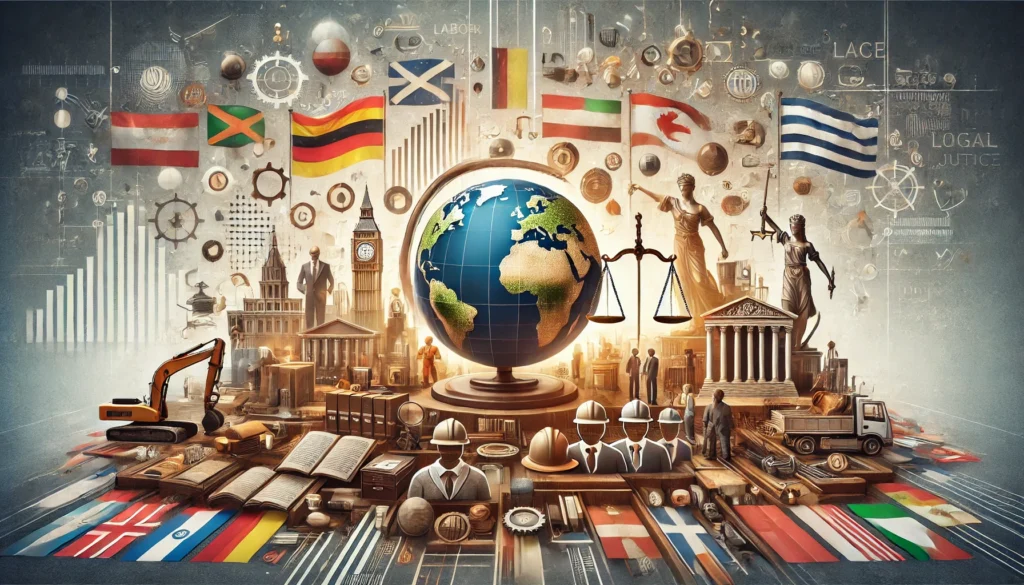Published On: 25th May, 2024

Authored By: Prasad C. Mali
MIT World Peace University, Pune
ABSTRACT
Intellectual property rights also known as IP rights are exclusive rights that are only given to the inventor\creator for their creation and creativity. The rights are intangible in nature. This research paper delves into the realm of Intellectual property rights (IPR) in the context of India, aiming to provide a comprehensive understanding of its various facets and significance. The paper explores the different types of intellectual property rights such as trademarks, copyrights, patents, etc. It examines the crucial role of international organizations, agencies, and treaties such as WIPO, WTO, and INTA.
INTRODUCTION
Intellectual property rights IPR serves as the cornerstone for protecting the creative and innovative ideas of the individual or organization. In India, as in many parts of the world, the recognition and enforcement of IPR play a pivotal and important role in promoting economic growth and ensuring fair competition. This research paper the intricacies of IPR in India, offering insights into its definition, types, significance, etc. the paper also aims to shed light on the nature of IPR and its implications for creators, inventors, businesses, and society at large.
REVIEW OF LITERATURE
The author has referred to the following literature for this article
Title – All You Need To Know About Intellectual Property Rights.
URL – https://blog.ipleaders.in/all-about-intellectual-property-rights-ipr/
Author – Nidhi Bajaj
This article has helped the author to understand the meaning of intellectual property rights, their types, etc
RESEARCH OBJECTIVES
- To understand the concept of intellectual property rights (IPR) and their significance in protecting the rights of creators and inventors’ creations.
- To analyze the various types of intellectual property rights, including trademarks, patents, and copyrights.
- To examine the importance and need for intellectual property rights
- To evaluate the role of international organizations, agencies, and treaties such as WIPO, WTO, and INTA, in promoting and safeguarding intellectual property rights globally.
ANALYSIS OF OBJECTIVES
WHAT ARE INTELLECTUAL PROPERTY RIGHTS?
Intellectual property rights are the rights that aim to protect one’s own creation by allowing the owners or creators of trademarks, copyrights, and patents to benefit from their own creations. These intellectual properties are also called intangible property because they do not need any physical presence. These are the assets which are been created using human intellect and hence are called intangible.
These rights include products of human intellect for example designs, poetry, literary, logos symbols, company names, and images which is specifically used for commercial purposes.
The intellectual property shall include rights relating to these, which was concluded in Stockholm at the Convention Establishing the World Intellectual Property Organization also known as WIPO. These are
- Trademarks, logos, commercial names, designations
- Invention in all the fields.
- To protect against unfair competition
- Industrial design
- Performance of artists etc
IMPORTANCE AND NEED FOR INTELLECTUAL PROPERTY
- It is one of the most important things to protect intellectual property rights because the investors get the control to use their Intellectual property for their own benefits in both terms.
- Firstly, it will give them financial benefits or commercial benefits. The owners can use their price to invent which helps them to earn huge amounts of profit. If they do not have these rights, anyone can use the respective name and hence earn profits. So, to protect these certain rights IPR is designed.
- Secondly, for example, if the competitor violates the intellectual property laws that protect the inventors, the inventor\owner can exercise the right to file and sue the party who has violated the IPR as they were trying to take benefits from the invention of the inventor.
- It is important because it provides legal protection for intellectual creations
- It also prevents enjoying the fruits of someone else’s creativity which is being used freely by a third party or unauthorized company, who is not bound to use those rights.
- It helps the creator\inventor to get recognition for his\her efforts
- These rights also help to promote creativity and its dissemination which helps to promote information widely
- One of the most important reasons why these are useful is because they help prevent the infringement of rights of the creator\inventor in their creation from unauthorized use.
- It helps to make possible fair trading.
- It helps in innovation activities in a manner that is beneficial to society, these include skill, finance, time, etc.
TYPES OF INTELLECTUAL PROPERTY RIGHTS
- Trademarks — these are basically a word, names, symbols, logos, quality, and ownership of products. These ones help to distinguish between two company good with others. It can also include three-dimensional features for example such as shape, size, packing combinations of colors, etc.
- Copyrights -: “Copyrights” is basic protection provided to authors of “original work of authorship”. It also protects the rights of the creator\inventor\authors of artistic work, dramatic, musical, cinematograph films, sounds, and literary works.
- Patents -: A patent is basically a protection which being granted by the national government for inventions in different fields. It prevents other people from selling, making, or using an invention for a period of up to 20 years.
TRADEMARK
A trademark is basically a sign, symbol, etc which is capable of distinguishing the goods and services of the company from other companies. These trademark needs to be protected or else they will be used by any unauthorized company\organization, so therefore trademarks are protected by IPR. It denotes a specific product and which legally differentiates it from all other types of products.
Trademarks are used in identifying and protecting words as well as design elements that identify the sources, owner\innovator of the product or item. Examples are logos, symbols, food brands, company logos, corporate logos, and also slogans of a certain organization. A trademark is also called a service mark. What a trademark does is it prevents one individual or a company from using their brand name without their prior permission.
Trademarks can also be bought and sold. These all things are legal under the permission trademark holder. He\she has the right to sell or buy the trademark. It can also be licensed to other companies for certain conditions and for a particular period of time.
There are four different Types of Marks are given below:-
- A Certification Mark
A mark on a commercial product, goods, and services that is registered enables its respective owners to make clear that those goods and services of that particular provider have those particular properties. Like origin, material, quality, accuracy
Examples – Union Made (for clothing), Energy Star(washing machines)
- A collective mark
A collective trademark is owned by any particular organization, and used by their members to identify and distinguish the products.
Example – Indian Bar Association (for the members of the organization)
- Service mark
It is a legally registered name or designation used in the manner of a trademark to distinguish between an organization’s services and those of competitors.
Example – JW Marriot (Hotel)
- Trademark
It is basically an easily recognizable symbol, logo, slogan phrase, lines, or words that denote the specific products, etc.
COPYRIGHTS
The term “copyrights” protects the rights of poets, artists, authors of literary and artistic works, etc. There are two types of rights that copyright owner enjoys. Firstly, economic rights which is the right of owners to get financial benefit from their own respective work. Which helps them to finance themselves. Secondly, moral rights are the protection of the non-economic interest of the author. The right to claim authorship is also a moral right.
The following works are protected under copyright protection:
- Films, movies, sound, music, choreography, etc
- Photographs, paintings, drawings all these are included in artistic works
- Novels, plays, poems, newspaper articles all these things are included in literary works
Copyright Act, of 1957 is the act that explicitly deals with copyright in India. This act provides various protection for the multiple categories of work given below.
- Musical and artistic works which is valid till the life of the author and with addition to 60 years
- Anonymous works which are valid for 60 years from the date of publication
- Cinematograph\films\movies which are available for the period of 60 years from the publication
- Sound recording, government work, works of international organizations, etc these are valid for 60 years
Copyright Infringement
It is basically a use of copyright-protected material without the prior permission of the respective copyright holder. Copyright infringement means that the specific right that has been afforded to the respective copyright holder is being breached by a third party or any unauthorized organization. Sound, Music, and photographs are well known which usually suffer copyright infringement. However the copyright can be granted to other parties with the prior permission owner, it should be done with proper licensing or the right can be bought from the owner. Copyright infringement is illegal, most of these include penalties that also can be included with a fine.
PATENTS
A patent is an exclusive and explicit right that has been granted for an invention or innovation, which can be a method, product, or maybe a process. A patent owner can sell his patent or can also grant a license to others to exploit the same. A person who has invented a useful article, a new process of making some new articles, etc. Patents are being granted for inventions that can be used to make money or have commercial value.
There are different types of patents: –
- Biological patents
It is a patent in which the invention is done in the felid of biology. by which the law allows other people to sell, use, import, and protect inventions for a limited period of time.
- Business patents
These patents help to determine new methods of doing business.
- Chemical patents
These patents include inventions in the pharmaceutical industry.
- Software patents
These patents are inventions in software programs etc.
A patent does not give the right to sell the invention. Rather it prevents others from using, making selling. The relief term of a patent is 20 years. So after 20 years, it is free to use unless and until is been patented again by someone. Patent Infringement. It happens when any unauthorized or third party make the use of patents without obtaining permission from the respective owner.
INTERNATIONAL ORGANIZATION, AGENCIES AND TREATIES
The organization helps to promote the use and protection of Intellectual property rights. There are several numbers of international organizations, treaties, and agencies. These are given below: –
- International Trademark Association (INTA)
- World Trade Organization (WTO)
- World Intellectual Property Organization (WIPO)
INTERNATIONAL TRADEMARK ASSOCIATION (INTA)
INTA is a non-profit membership association that is being dedicated to support and advancement. It is mainly composed of trademark owners and their practitioners. As per the reports, there are more than 5,700 trademark owners and professionals in more than 189 countries and they comprised across all the country’s industries sizes that own trademarks that belong to INTA. It provides policy development and advocacy at the national, international, and regional levels. It also provides research material for global trademark and education and training programs absolutely for free.
WORLD TRADE ORGANIZATION (WTO)
WTO deals with rules of trade among its more than 150 member nations. Its main function is to resolve all the disputes related to trade and it also administers various agreements which include Intellectual property rights. Another function is reviewing national trade policies and ensuring that the trade flows smoothly and freely. Trade-related aspects of intellectual property rights (TRIPS) are basically one of the most comprehensive agreements on IP. TRIPS play a central role in facilizing trade in knowledge and creativity.
WORLD INTELLECTUAL PROPERTY ORGANIZATION (WIPO)
WIPO is the agency of the United Nations whose main motive is to promote intellectual property across the world. All these things reward creativity and also stimulate innovations and help in contributing to economic development. It improves intellectual property protection all across the globe to improve global peace and harmony. It helps to render legal as well as technical assistance in intellectual property rights. To collect and circulate the necessary information related to law.
IMPORTANT CASES LAW RELATED TO INTELLECTUAL PROPERTY RIGHTS
- Bajaj Auto Ltd. v. TVS Motor Company Ltd. (2009)2 in this case, which basically revolves around patent infringement in the context of two-wheeler technology. The Bajaj Auto Company filed the suit against the renowned tow-wheeler brand TVS Motor Company. They alleged that TVS motor have used their DTS-I technology which is used in motorcycles. The court found TVS Motor liable for patent infringement. Hence the court ordered TVS to stop its production and sales of infringing products and the damages to Bajaj Auto.
- Cadila Healthcare Ltd. v. Cadila Pharmaceuticals Ltd. (2001)3 In the case, Cadila Healthcare Ltd sued Cadila Pharmaceuticals Ltd. for Trademark infringement and passing off. Cadila Healthcare alleged that Cadila Pharmaceuticals’ use of a similar trademark caused confusion among customers. The court held Cadial Pharmaceuticals liable for trademark infringement, emphasizing the likelihood of confusion between the two trademarks, and ordered it to pay damages to Cadila Healthcare.
- Eastern Book Company & Ors. v. D.B. Modak & Anr. (2008)4 This is the landmark case that addressed the copyrightability of legal judgments. Eastern book companies claimed copyrights over the text of judgment published in law reports. D.B. Modak Reproduced this judgment in his books with proper authorization. The court ruled that while the text of judgment published in law reports could be copyrighted, in legal principles and ruling contained therein were not subject to copyright protection. Thus, DB Modak’s reproduction of the judgment did not constitute copyright infringement.
CONCLUSION
In conclusion, this research underscores the importance of IPR in India and Globally. In essence, intellectual property rights not only protect individual rights but also contribute to the collective progress of society, making them indispensable in the modern knowledge-based economy.
REFERENCES:
- “All about Intellectual Property Rights (IPR)., https://blog.ipleaders.in/all-about-intellectual-property-rights-ipr/.
- Bajaj Auto Ltd. Vs. Tvs Motor Company Ltd. [2009] INSC 1590 (16 September 2009)
- Cadila Health Care Ltd. v. Cadila Pharmaceuticals Ltd. 2001 (2) PTC 541 SC
- Eastern Book Company and Ors. v. D.B. Modak and Anr (2008) 1 SCC 1
Intellectual Property 4th edition by Deborah E. Bounchoux
WIPO Intellectual Property Handbook by WIPO
“Intellectual Property.” Wikipedia, 2 Apr. 2024.
“Trademark Definition, What It Protects, Symbols, Example.” Investopedia, https://www.investopedia.com/terms/t/trademark.asp. Accessed 10 Apr. 2024
Trademarks. https://www.wipo.int/trademarks/en/index.html. Accessed 10 Apr. 2024
World Trade Organization – Global Trade. https://www.wto.org/index.htm. Accessed 10 Apr. 2024.




